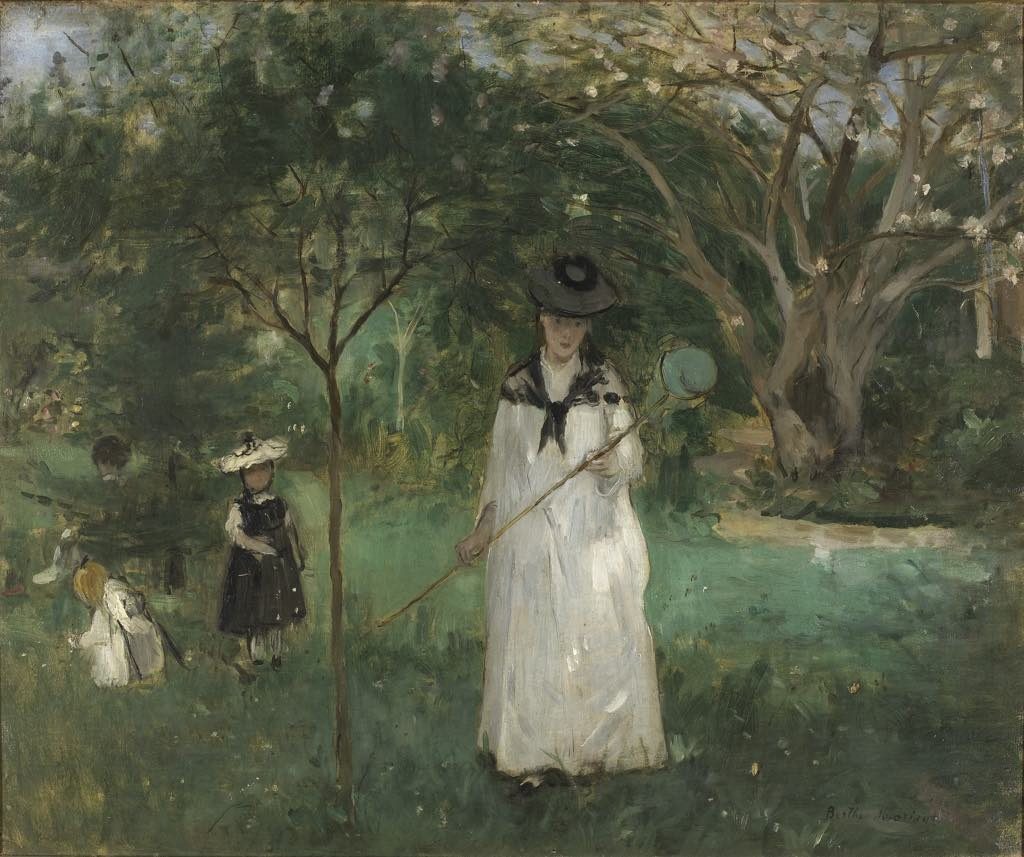
Berthe Morisot (1841-95), a key French Impressionist painter, has not been the subject of a major exhibition in France since 1941. Is this because she was a woman and therefore dismissed as a minor painter? Perhaps. The current exhibition of her work at the Musée d’Orsay finally gives us a chance to assess her work.
Aside from a lovely mini-exhibition I saw at the Musée Marmottan, which holds the largest collection of her work, and the odd painting in various group shows over the years, I didn’t know much about this artist from an “austerely middle-class family,” as her friend Auguste Renoir put it. In spite of her background, she went her own way, consciously seeking to “emancipate” herself, studying under the great Camille Corot and participating actively in the then-avant-garde Impressionist movement as its first female member. She married Eugène Manet, the brother of a good friend, the painter Édouard.
The exhibition attempts to get away from the abiding view of Morisot as a ”woman’s painter” by presenting mostly portraits and figure paintings, nearly half of which come from private collections. The curators offer a lovely and accurate description of Morisot’s work as “simultaneously peaceful and restless, luminous and mysterious, challenging and poetic.”
The type of domestic and everyday scenes – both interior and exterior – that Morisot painted were gaining critical acceptance as legitimate subject matter for painting in the last quarter of the 19th century and were being treated by both male and female painters.
Morisot’s daring streak led her to paint her sister Edma Pontillon (a favorite model) in 1871 while she was heavily pregnant, not exactly an acceptable subject at the time. Surprisingly, when she submitted it to the Salon, it was accepted, though her subsequent entries were not.

While Morisot painted many interior scenes, she was also interested in painting figures in outdoor settings, where she captured her “impressions,” but she probably completed them later in the studio, as Manet and many other contemporaries did (Manet’s “ Déjeuner sur l’Herbe,” for example, was a composite finished in the studio).

While on the Isle of Wight with her husband Eugène Manet, she did just the opposite, however, painting him sitting indoors and gazing through a window at the scene outside, reversing the usual male-female roles of the time: here it is the man sitting passively watching a woman and girl on the move outside. Morisot noted in a letter to her sister that Eugène was a “less complacent” model than she was.
Later works moved indoors, focusing in on the figure of women in elegant outfits or in various states of undress before a mirror, occupied by their toilette.
One of the most interesting facets of Morisot’s work is the way she continually experimented, eventually loosening up her brushwork “to create a sense of immediacy,” as the curators put it, in ways far more radical than many other Impressionists, often inspiring debate about whether or not some of her paintings were even finished.
One critic called her “the angel of the incomplete,” and she was sometimes described as typically female in her inability to finish her work. This unfinished aesthetic, however, which can still be disconcerting even today, was a deliberate choice on her part. As the curators note, the technique introduced “temporality into the static world of the painting” and reflects an attempt to “mirror and resist the passage of time.”
Happily, unlike many other women artists, Morisot had success in her lifetime, moving in artistic circles, exhibiting in many group shows, receiving praise from the critics and selling her works, some of them to museums and the French state. She wasn’t just a pretty painter.
Favorite